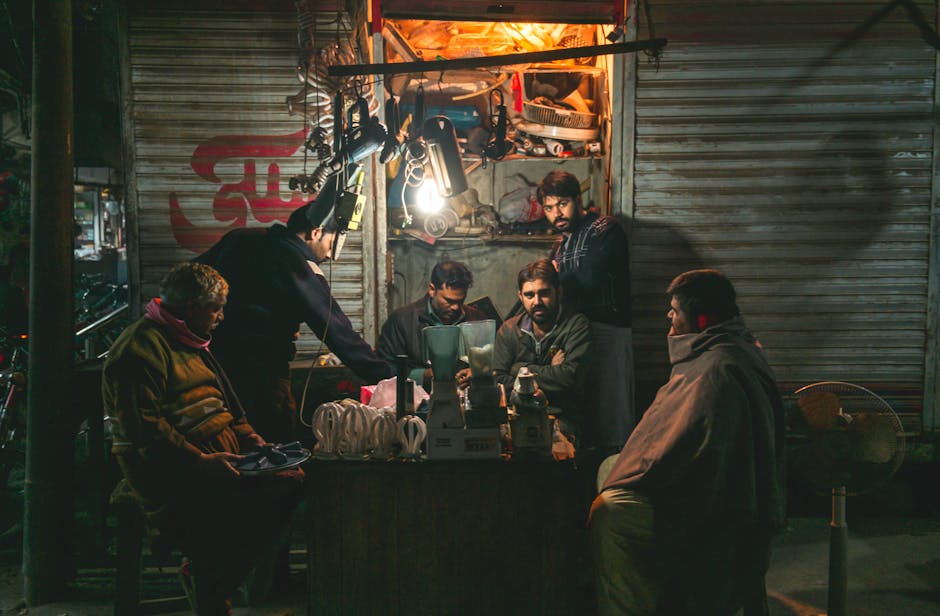Table of Contents
remember those old banner ads that just sat there, kind of blinking at you from the side of a webpage? Yeah, those feel like ancient history now, don’t they? It’s 2025, and what we call “social display ads” are, well, they’re something else entirely. It’s not just about slapping an image onto a feed anymore; it’s about making ads that feel like they actually belong there, almost like content your friend shared, but for a brand. A whole lot has shifted.
Think about it. We spend so much time on social apps, scrolling through stories, watching quick videos, chatting with people. And honestly, we’ve gotten really good at just ignoring anything that screams “AD!” from a mile away. So, marketers, they had to get smart. Real smart. The social display ads popping up now? They’re way more sneaky, in a good way. They’re less about interruption and more about, I guess, integration. They fit right in. You might even forget for a second it’s an ad, and that, I believe, is the whole point.
The Screen’s Not Flat Anymore, You Know?
One of the biggest changes I’ve seen with social display ads in 2025 is how they’ve totally left behind the old, static image. Like, who even wants to look at a flat picture when your phone can do so much cool stuff? Now, these ads, they’re practically mini-experiences. We’re talking about interactive bits where you can tap and swipe through different product colors, or maybe even drag things around on the screen to see how they look. It’s pretty wild.
And video? Oh man, short-form video is everything. Remember how TikTok just exploded? Well, every social platform basically copied that vibe, and these ads live right there. They’re quick, punchy, and often use music you actually recognize. What’s interesting is how many brands are using creators, real people, to make these video ads. It’s not always super polished, studio-shot stuff. Sometimes it’s just someone talking about a product while walking down the street, and it feels, well, it feels more authentic, right? Plus, with AR filters getting better, I’ve seen ads where you can virtually try on sunglasses or see how a new couch would look in your living room, all without leaving the app. That’s a game-changer for sure.
The Brainy Bits Behind the Eye Candy
Okay, so these ads look cool, but how do they know to show you that specific pair of shoes or that concert ticket for a band you like? That’s where the super-smart tech comes in. It’s not just about cookies anymore – thank goodness, because those things were getting weird with all the privacy worries. Now, it’s much more about understanding context and behavior on the social platforms themselves.
Think of it like this: the algorithms (which are basically just fancy math working in the background) have gotten really, really good at figuring out what you’re interested in based on what you watch, what you tap, who you follow, even what you don’t interact with. So, if you’re always liking posts about hiking gear, you’re probably going to see social display ads for new camping tents or outdoor adventure trips. It’s way more targeted than before, almost spooky sometimes. But it means fewer irrelevant ads cluttering up your feed, which is a win, I guess. Programmatic buying – buying ad space automatically, super-fast – plays a huge role here, making sure the right ad lands in front of the right person at just the right moment. It’s all about precision now, not just throwing ads at everyone and hoping something sticks.
It’s Not Just Selling, It’s… Talking?
This is a big one for social display ads in 2025. It’s not just about getting you to click a button and buy something. Brands, the smart ones anyway, are using these ads to actually start conversations. Like, instead of just showing a picture of a shirt, the ad might have a quick poll: “Which color do you like better?” Or it asks a question in the caption, encouraging comments.
Some of these ads actually feature user-generated content, which is basically stuff real people made, not professional advertisers. Maybe a video of someone unboxing a product they bought, or a picture they took wearing new clothes. When you see that, it feels more trustworthy, doesn’t it? It’s not some big corporation telling you to buy something; it’s more like a friend recommending it. This whole push toward community building around ads means brands are trying to build relationships, not just make a quick sale. It’s about getting you to feel something about the brand, to be part of their “thing,” even if you don’t buy anything right away. It’s a softer sell, and I gotta say, it works better on me.
Navigating the Tricky Waters: Privacy and Trust
So, all this super-smart targeting and personalization sounds cool, but it also brings up that big question: what about my data? And honestly, privacy is a huge deal for social display ads in 2025. People are more aware than ever about how their info is being used. And because of that, regulations have gotten tougher, and social platforms have had to adapt.
What I’ve noticed is a push for more transparency. Like, sometimes an ad will have a little “Why am I seeing this?” button, and it actually tells you, in pretty plain language, why that specific ad popped up. Also, platforms are giving users more control over their ad preferences. You can actually tell them, “Hey, I don’t want to see ads about X,” or maybe even say “Don’t track my activity outside this app.” It’s not perfect, but it’s a step in the right direction, for sure. Brands that are doing well are the ones who are upfront about their data practices and who really respect user choices. If an ad feels creepy because it knows too much, people are just going to tune out, or worse, get mad. It’s a delicate balance, trying to be personal without being too intrusive. But, if a brand can get it right, that’s where the trust comes in, and trust, you know, that’s super important these days.
What’s the Score? Measuring What Matters Now
Back in the day, marketers just wanted to know how many times their ad was seen (impressions) or how many people clicked on it. But with social display ads being so much more than just a picture, those old numbers don’t really tell the whole story in 2025. It’s like, if an ad makes someone laugh or gets them talking about a brand with their friends, isn’t that worth something, even if they didn’t click “Buy Now” right away?
Now, people are looking at deeper metrics. They want to know if the ad actually got people to spend more time on the brand’s profile, or if it increased brand mentions in social conversations. Marketers are also really interested in conversions that happen after seeing an ad, even if they didn’t click it directly. Maybe they saw an ad for a new coffee maker, didn’t click, but then a few days later, they bought it from Amazon. That still counts! The tech has gotten much better at connecting those dots, even across different apps and websites. It’s about building a picture of the whole customer journey, not just that one click. So, the goal isn’t just eyeballs; it’s building actual connections and, eventually, sales.
Who’s Killing It with These Ads?
Honestly, it seems like the brands doing really well with social display ads in 2025 are the ones that aren’t afraid to be a bit playful or even a little messy. Like, this one indie cosmetics company I follow, they don’t just show perfect models. They use user-submitted videos of people trying on their makeup, sometimes they smudge it, sometimes they get it wrong, and it feels real. Their ads are often short, almost like a friend’s story, but they show off the product in action and use polls to ask about favorite shades. It’s not salesy at all. People actually engage with it, sharing their own looks and ideas. That’s way more effective than some super polished, totally fake-feeling ad, don’t you think? It comes across as genuine, and that gets people talking and sharing, which is basically free advertising.
Looking Ahead, But Not Too Far Out
So, where do social display ads go from here? I don’t think they’re going away, that’s for sure. They’re just going to keep getting more and more integrated into our digital lives. I can totally see a future where these ads are even more personalized, maybe even suggesting things based on your mood or what you’re doing right now. (A bit creepy, but probably coming.) The big push will continue to be about creating experiences, not just showing a product. It’s about blending in, becoming part of the vibe, rather than being an annoying interruption. And if brands can keep doing that while respecting our privacy, then, yeah, social display ads are going to stick around and maybe even become something we don’t totally hate.
Frequently Asked Questions About Social Display Ads in 2025
Q1: Are social display ads just banner ads on social media?
A1: Not really, not anymore. Back in the day, sure, they started as pretty static images. But in 2025, they’re way more interactive, often video-based, and they blend seamlessly into your social feed. They’re designed to look and feel like content, not just a blinking billboard.
Q2: How do these ads know what I like?
A2: They use a mix of things! The social platforms use super-smart algorithms that look at your activity – what you watch, like, share, who you follow – to figure out your interests. It’s not just old cookies; it’s behavioral data right within the app, sometimes even what you don’t engage with.
Q3: Are social display ads good for brand building or just for getting sales?
A3: They’re actually really good for both! While they can definitely drive direct sales with clear calls to action, many brands use them to build community, encourage engagement, and create a strong brand presence. It’s about starting conversations and building a relationship, not just a one-time click.
Q4: What about my privacy with all this targeted advertising?
A4: Good question! Privacy is a huge concern in 2025. Platforms and advertisers are getting better at transparency, often letting you see why you’re seeing an ad. Plus, you usually have more control over your ad preferences directly in the app settings, allowing you to opt out of certain tracking or ad categories. It’s a balance, trying to be personal without being creepy.
Q5: Will social display ads eventually just be AR/VR experiences?
A5: It’s definitely headed that way! We’re already seeing a lot more augmented reality (AR) filters in ads where you can virtually try things on or place products in your space. As virtual reality (VR) tech becomes more common, I wouldn’t be surprised to see ads that are fully immersive, letting you walk through a virtual store or experience a product in a whole new dimension. It’s coming, probably sooner than you think.












